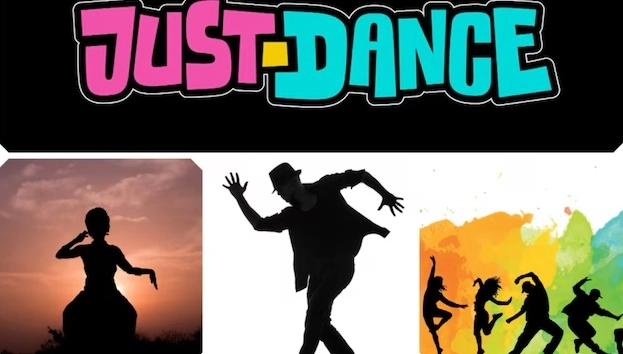
International Dance Day 2025: International Dance Day, also known as World Dance Day, is a worldwide tribute to dance's rich heritage and artistic power. It is celebrated on April 29 and highlights the vast range of styles and traditions that make dance a compelling form of storytelling and cultural expression. This occasion emphasises dance’s unique ability to bridge cultures, break language barriers, and foster global unity through rhythm and motion.
The inception of International Dance Day dates back to 1982, when the Dance Committee of the International Theatre Institute (ITI), in association with UNESCO, established this special day to honour and elevate the performing art of dance.
The chosen date, April 29, commemorates the birth anniversary of Jean-Georges Noverre (1727), a renowned French dancer and choreographer widely credited as the pioneer of modern ballet.
Each year, the celebration features a dedicated message delivered by a prominent dancer or choreographer, selected by ITI’s International Dance Committee. This message, translated into multiple languages, is shared worldwide, serving as a powerful tribute to dance as a global art form.
India is home to a vast array of dance traditions, each with its own cultural heritage and storytelling style. Below are some of the most prominent dance forms and their legendary exponents:
Originating from Odisha, Odissi is known for its graceful mudras (hand gestures) and expressive storytelling.
Exponent: Sonal Mansingh – A prominent Odissi dancer and choreographer who has received the Padma Bhushan award for her contributions to classical dance.
From Tamil Nadu, Bharatanatyam is one of the oldest classical dance forms in India, celebrated for its rhythmic footwork and expressive themes.
Exponent: Mallika Sarabhai – An iconic Bharatanatyam dancer and choreographer, Mallika has played a major role in popularising the art form and expanding its reach globally.
Kuchipudi is a classical dance form from Andhra Pradesh, blending graceful movements with strong narrative elements.
Exponent: Guru Vempati Chinna Satyam – Renowned for bringing Kuchipudi to international attention and systematising its performance standards.
Kathak, a dance form rooted in North India, is known for intricate footwork, spins, and storytelling.
Exponent: Pandit Birju Maharaj – The face of the Lucknow Gharana of Kathak, he is a living legend in Indian classical dance and received the Padma Vibhushan in 1986.
Originating from Manipur, this delicate and devotional dance form is often associated with the tales of Radha and Krishna.
Exponent: Darshana Jhaveri – A leading exponent of Manipuri dance and a founding member of the Manipuri Nartanalaya, instrumental in popularising this style.
 World Dance Day 2025: Students shine bright through the art of dance at Shree Balaji International School, Navi Mumbai.
World Dance Day 2025: Students shine bright through the art of dance at Shree Balaji International School, Navi Mumbai.
At Shree Balaji International School (SBIS), Navi Mumbai, dance is more than just an extracurricular activity — it is a vital part of the curriculum that nurtures students’ confidence, creativity, and physical expression.
In celebration of World Dance Day, the school proudly highlights the transformative impact of its regular dance classes.
Under the guidance of dance teacher Tapasya, students are encouraged to explore the art of movement as a powerful form of self-expression.
“Dance is the music made visible — a heartbeat we all share when words fall short," she says. Her passion for the art form and commitment to teaching ensure that students experience both joy and discipline through every step.
Principal Lily Roy, who leads SBIS with a vision of holistic development, continues to champion a curriculum that harmonises academic excellence with the performing arts. The school’s emphasis on integrating dance into daily learning reflects its dedication to nurturing well-rounded individuals.
World Dance Day serves as a reminder of the importance of the performing arts in education — a mission SBIS continues to uphold with pride and purpose.
The primary goal of International Dance Day is to emphasise dance as a unifying and expressive art that transcends political, cultural, and geographic boundaries. It fosters harmony by bringing together people from all walks of life.
Moreover, the day provides a platform for dance communities to highlight their work and contributions, encouraging governments and institutions to recognise and support the performing arts. It reinforces the importance of dance in education, cultural preservation, and artistic innovation.
Every year, a prominent dancer or choreographer delivers a message. This year’s theme emphasises dance’s unifying power to transcend cultural and geographical boundaries.
International Dance Day was established in 1982 by the Dance Committee of the International Theatre Institute (ITI) in partnership with UNESCO to honour the art of dance.
April 29 was chosen to commemorate the birth anniversary of Jean-Georges Noverre, a French dancer and choreographer who is considered the pioneer of modern ballet.
You can celebrate by attending a dance performance, learning a new dance style, posting a dance video online, or supporting local dancers and choreographers.